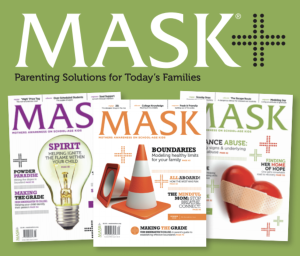
Be Careful Using Innocent Hashtags
March 16, 2021
Chaos & Mindfulness
March 18, 2021Teaching children refusal skills is so important, but culturally and historically, children have not been given the right to say no or give input towards what happens to them.
As the most vulnerable, yet most precious part of our society, children’s wishes ought to be respected as long as they are safe, healthy, and meeting appropriate expectations. Teaching them how to say no appropriately and in specific situations can save their lives, preserve their innocence and help them develop into healthy, self-respecting adults. It is hard for parents to hear their children say no, especially when it comes to brushing their teeth or finishing their homework, however, we are their testing ground and when we respond appropriately by teaching them when to say no and how to say no, we are giving them the tool they need to develop healthy boundaries and self-protection skills. If we don’t allow our kids to say no, if we don’t teach them how to say no, then how can we blame them when they say yes to trusted friends offering them marijuana or to online predators offering to meet with them to party? Shifting our parenting expectations to allow for negotiation, healthy boundary setting, and respectful disagreement can teach them life skills that will help them succeed as adults. When we raise people-pleasing children who say yes to authority figures without critically evaluating the decisions for themselves, we raise children who cannot make independent, well thought-out decisions for themselves, cannot negotiate to get their needs met, and allow others to take advantage of them.
We all know why we call them the terrible-2’s and terrifying-3’s – they are learning how to say no. It’s interesting that developmentally they meet this stage so early on, and yet parents try to train this ability out of them. That is not to say that we should let them run amock – but helping them learn how and when to say no appropriately can start as early as 2. Establish clear limits based on your family’s values and allow them to choose the rest. Set clear, developmentally appropriate expectations such as “No hitting”, but allow them to choose what they wear (weather appropriate). We know that pre-school aged children are learning through observation and imitation, so model saying “no thank you” and other appropriate boundary setting-behaviors in front of them as a way to begin teaching how to say no. Offer them the option to pick between two acceptable choices to help them feel empowered to choose as well as feel empowered to say no to the other option. Introduce the topic of learning how to accept no as well by talking about how they feel when they hear a no. Developing their skills regarding empathy can also help them understand refusal skills from both sides.
- Temper tantrums are normal at this stage – when they have returned to a calm state, model how to say no
- They can share with others
- They can identify basic feelings about saying no
- They can practice how to say “no, thank you”
- They can guess how you feel based on your facial expressions
- They can identify safe and unsafe situations
- They can start to role play saying no
- They will have a hard time accepting no and dealing with intense emotions, but that’s fairly normal
What you can do
- Model saying No
- Identify clear behavioral expectation
- Respect their no when they use the refusal skill in appropriate situations
- Offer them choices
- Validate their choices
- Don’t force them to do things like hug others if they do not want to
- Teach them boundary setting
- Play feelings charades
- have them guess your feeling and vice versa
- Role play how to say no
- talk to them about when to say no
“I know you want to eat brownies, but brownies are not for dinner. You can choose mac and cheese or pasta for dinner today.”
“When we don’t want to do something, please use No Thank You. If it is a safe and healthy choice, mom and dad will listen.”
“Safe choices are what we want to teach you. When is is safe to say no and when is it safe to yes?”
MASK the Parenting Magazine a quarterly publication providing solutions for Today’s Families.
The parenting manual offering solutions to the modern-day challenges families face. From Pre-K
through College stay up to date on the modern day issues families face.
Are you up to date on the issues your child is facing?
MASK Mothers Awareness on School-age Kids offers parenting solutions for today’s families. MASK tackles important topics – from drugs and alcohol to bullying and Internet safety -and gives students, parents and the community the knowledge and tools to manage these potential challenges.
Subscribe today! https://www.tools4teaching.com/product/mask-the-magazine/
Download and share the MASKmatters app now! Made for children, parents, teachers and in Spanish.
Have solutions at your fingertips
Available free on apple and google play links below
Apple https://apps.apple.com/us/app/maskmatters/id1482305692
Google Play
https://play.google.com/store/apps/details?id=com.maskmatters.maskmattersapp&hl=en_US&gl=US





